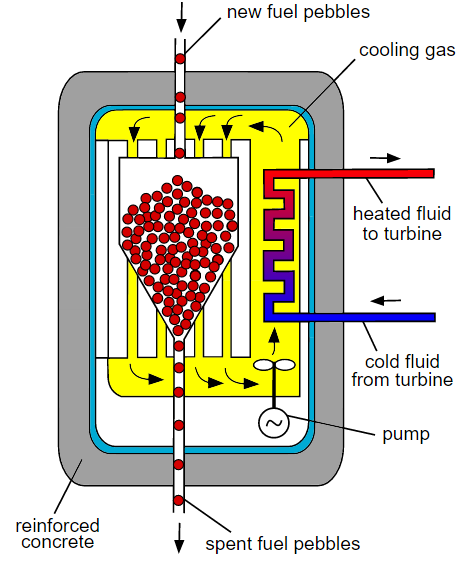China has horrible pollution problems. In some cities, the air is so polluted that it is like a thick fog. A great deal of this pollution is caused by the burning of coal. About seventy percent of China's electricity is currently generated by coal-fired power plants. In addition to being a source of tremendous pollution which threatens public health, the burning of coal is also putting a lot of carbon dioxide into the atmosphere which is accelerating climate change. China is working on a variety of different energy sources to replace coal including wind, solar, hydro and nuclear power.
Nuclear power currently provides about two percent of the electricity in China. They have thirty-six operating nuclear power plants and are building twenty more. They hope to boost the share of electricity generated by nuclear power up to six percent by 2020 with plans to build dozens of more nuclear power plants after that.
Now China has announced a bold new plan for conversion of old coal-fired power plants to new nuclear power plants. The idea is that the boilers and furnaces in existing coal plant would be removed and replaced with the functional elements of high-temperature gas cooled (HTGC) nuclear reactors This could result in huge savings.
Only what are called super-critical steam coal plants are built to handle the high temperatures and pressures required for HTGC nuclear reactors. A second criterion for the first wave of conversions is that the coal power plants be located close to major population centers where the need for relief from air pollution is most acute. Given the public concern about the safety of nuclear power plants, a third criterion of this plan is that the public must be convinced that the new nuclear power reactors in the refitted coal plants are very safe.
The new nuclear power plants being considered for installation in coal power plants are based on the pebble-bed reactor design. The nuclear fuel for a pebble-bed reactor is in the form of pellets of fissionable material. The pellets are coated with multiple layers of graphite and ceramic material until they are the size of baseballs. The graphite/ceramic coating acts as a neutron moderator. The melting point of the coating is much higher than any temperature that can be generated by the fissionable material in the core of the sphere.
A pile of these spheres is placed in the core of the reactor with helium gas circulating in the spaces between the spheres. The gas carries the heat from the spheres to boilers that generate steam to turn turbines and generate electricity. This system does not require the complex cooling systems required to circulate water and the helium does not absorb as many neutrons as water coolant which reduces radioactive contamination. In addition, the gas does not have to be condensed into a liquid as in a traditional light water reactor which eliminates the danger of a steam explosion.
There is no danger of a meltdown in a pebble-bed reactor. If every part of the system fails, the only result is that power generation stops. Then the reactor is simply left to cool down which will take a significant amount of time. However, that outcome is certainly better and safer than the type of nuclear accidents that can occur with a traditional light water reactor.
The downside of this plan for the conversion of old coal power plants is that the cost of production of fuel and components is high. The Chinese hope to be able to ramp up mass production of fuel and components and cut the current cost of power from pebble-bed reactors in half to match other sources of green energy. They are also considering export of this technology.
Artist's sketch of a pebble-bed reactor:
